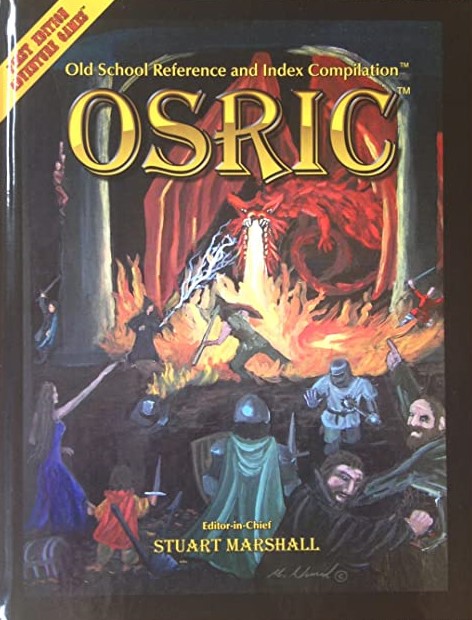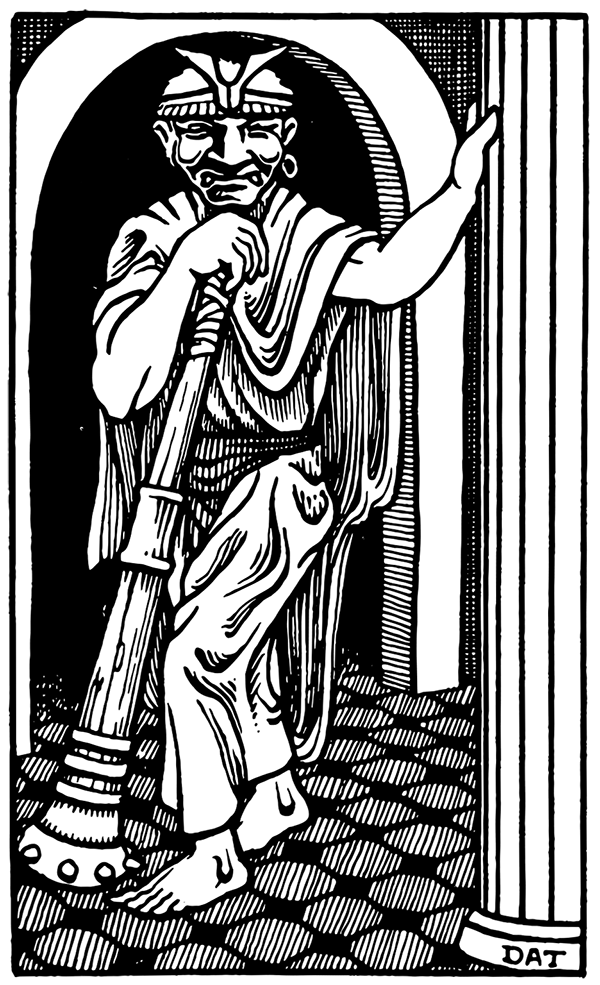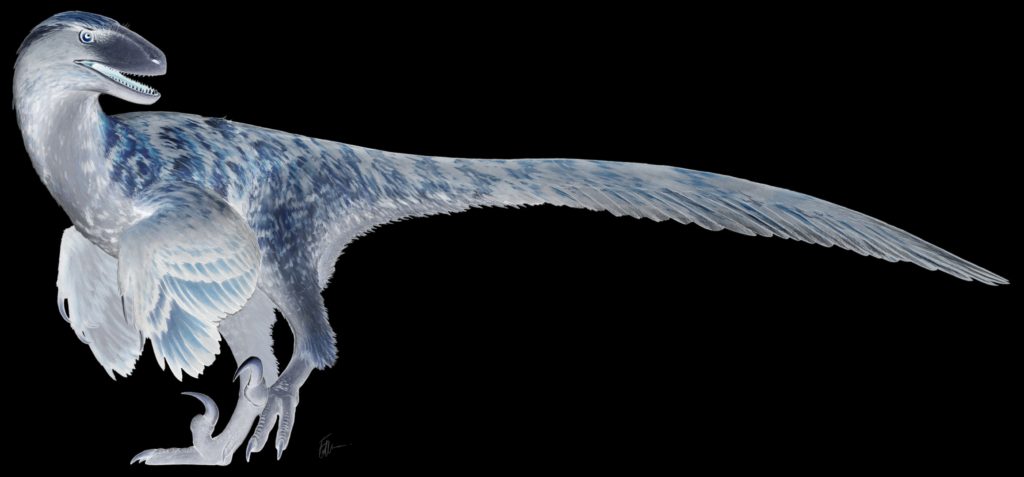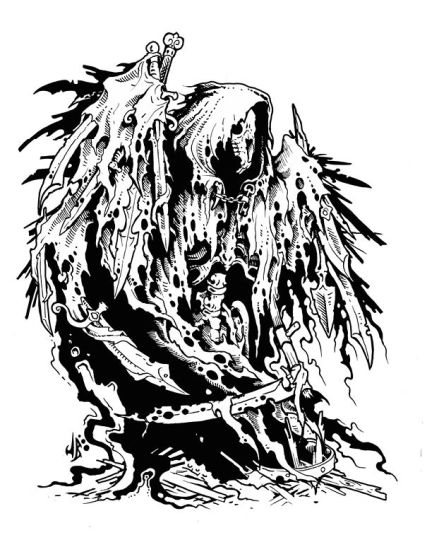OSRIC: Cloud Giants
Let’s take a look at cloud giants from 1981 to today, specifically focusing on the giants’ cloud castles. We start with a survey of the cloud giant across five editions and three decades, ending with OSRIC, which largely repeats 1E AD&D.

D&D Expert: “[Cloud giants] live in castles in the sides of mountains or atop masses of clouds.” Cloud giants have no magical abilities.
1E AD&D: “Unlike the commoner sorts of giants, cloud giants usually reside in crude castles built atop mountains or on magical cloud islands.” Cloud-dwelling cloud giants can levitate.
2E AD&D: “The majority of cloud giants live on cloud-covered mountain peaks in temperate and sub-tropical areas. These giants make their lairs in crude castles. Only 10% of good cloud giants live in castles on enchanted clouds. …. Cloud lairs are fantastic places with giant-sized gardens of fruit trees. According to legend, some giants mine their cloud islands for small chunks of the purest silver.” Cloud-dwelling cloud giants can levitate and create fog clouds and walls of fog.
3E D&D: “The majority of cloud giants dwell on cloud-covered mountain peaks, making their lairs in crude castles. …. About 10% of the population builds castles on enchanted cloud islands and tends to be isolated from other cloud giants.” These cloud giants have magical abilities similar to 2E AD&D cloud giants.
5E D&D: “[Cloud giants] dwell in castles on high mountain peaks, or on the solid clouds that once held their fiefs. Still gracing the skies on occasion, these magic clouds are a lasting remnant of the giants’ lost empires.” Descriptions of cloud islands include “extraordinary gardens” with giant-sized fruits and vegetables. Cloud-dwelling cloud giants “keep griffons, perytons, and wyverns” in much the same way some “nobles keep an aerie for hunting hawks”. 5E D&D cloud giants possess the most magical abilities. They can detect magic; create fog clouds and light; use feather fall, fly, misty step, and telekinesis; can control weather; and assume gaseous form.
OSRIC: “Cloud giants usually live in giant castles at high elevations. When not high up in the mountains, their castles on on clouds given substance by magic.” Cloud-dwelling cloud giants can levitate.

In 1E, 2E, 3E, and OSRIC, only cloud-dwelling giants have magical abilities, the base of which is the ability to levitate, which makes getting to and from their cloud islands a bit easier. Only one in ten cloud giants have this magical ability, and these cloud giants tend to have higher intelligence compared to their ground-bound kin. D&D Expert cloud giants cannot levitate, which means those that dwell in the clouds must reach them via more mundane means. With 5E, all cloud giants possess a range of magical abilities, most of which fit the theme of living in the clouds. (I’m a bit skeptical of telekinesis, which I’m think ought to be replaced with gust of wind.)
If we ignore secondary sources, such as material related to the Forgotten Realms, the origin of cloud islands remains undefined. Did cloud giants create them? Did cloud islands occur naturally? Did some other creature create the cloud islands for the cloud giants, or did cloud giants conquer the cloud islands? I like 5E’s idea that the cloud islands once formed a sort of feudal cloud nation; this idea probably originated with the Forgotten Realms, which is 5E’s default setting.
From Whence Cloud Islands?
Ages ago, followers of Yan-C-Bin, the Prince of Evil Air, opened gates between Elemental Air and the Prime Material Plane. Through those gates floated cloud islands, which Yan-C-Bin’s most powerful clerics and magic-users anchored to mountain peaks and then enslaved the mountain peoples of the region. Over a period of many decades, a combination of slave labor and magic built Hua-B-Nroog, a series of fortresses, monasteries, cathedrals, and towns that formed a cloud nation devoted to the Prince of Evil Air.
From Whence Cloud Giants?
Some cloud giant chieftains looked up from their mountaintop lairs and grew envious. Others looked down at the enslaved mountain people and grew angry. The disparate cloud giant clans formed an army, gathered allies, and went to war against Yan-C-Bin’s followers. After years of savage fighting, the cloud giants emerged victorious. They took Hua-B-Nroog as their own.
From Whence Civil War?
From the start of the war against Hua-B-Nroog, cloud giant chieftains had divided aims. Some fought to free the enslaved mountain peoples from the tyranny of the Prince of Evil Air. Others, however, sought to impose their own tyranny. Each side used the other as a means to their different ends. When the war ended and peace began, the tension between cloud giant factions increased to the breaking point. Civil war engulfed Hua-B-Nroog.
One freedom-loving cloud giant hero fought his way into the heart of Hua-B-Nroog’s largest cathedral. There he shattered the Calming Eye, a magical gemstone that kept Hua-B-Nroog’s various islands stable during even the most violent storms. Other good giants sundered the mountaintop anchors. Hua-B-Nroog broke apart, its cloud islands scattered by the winds.




